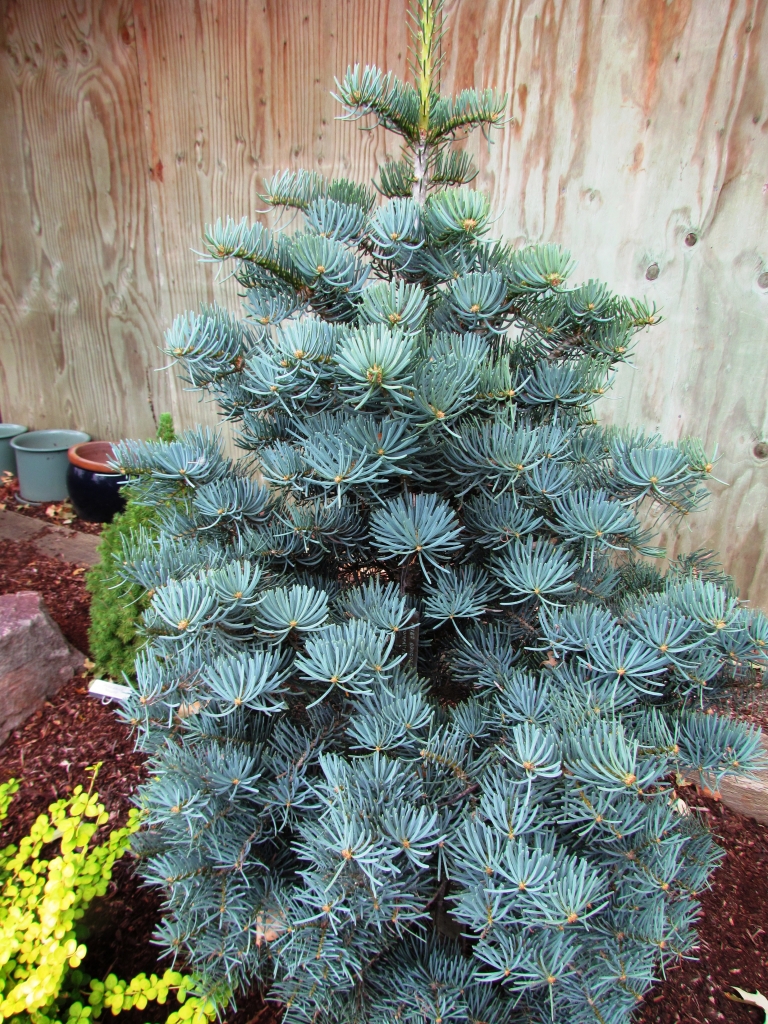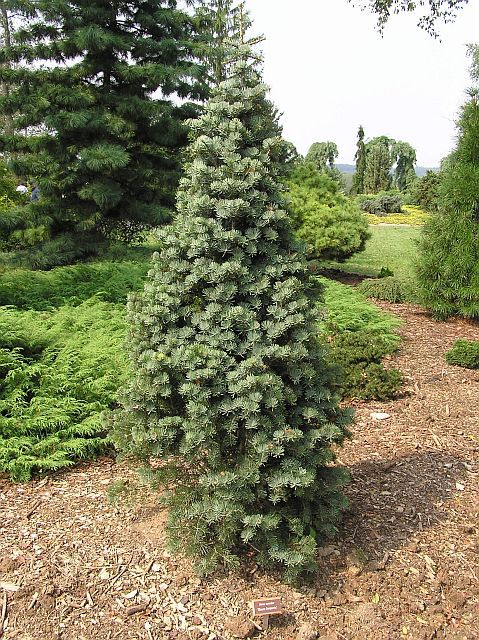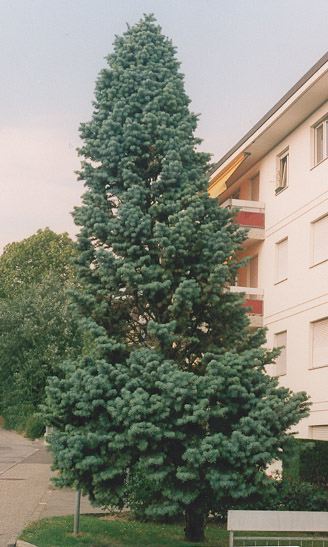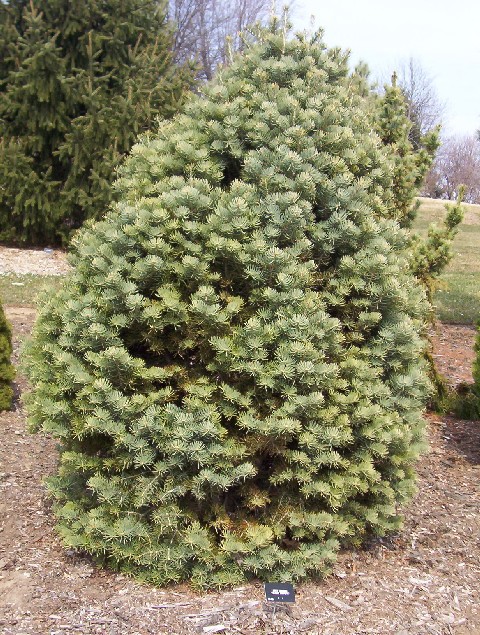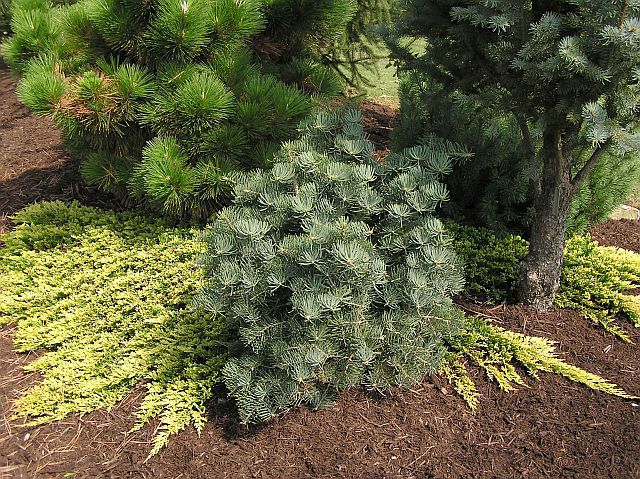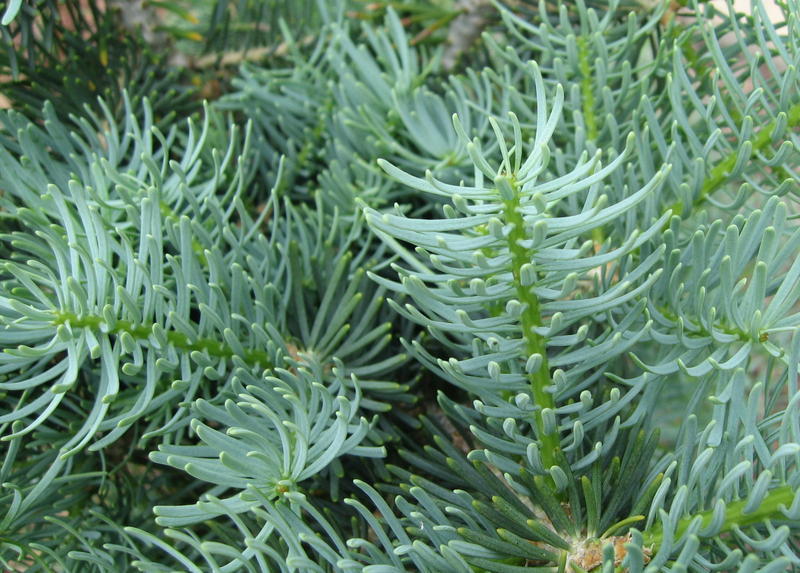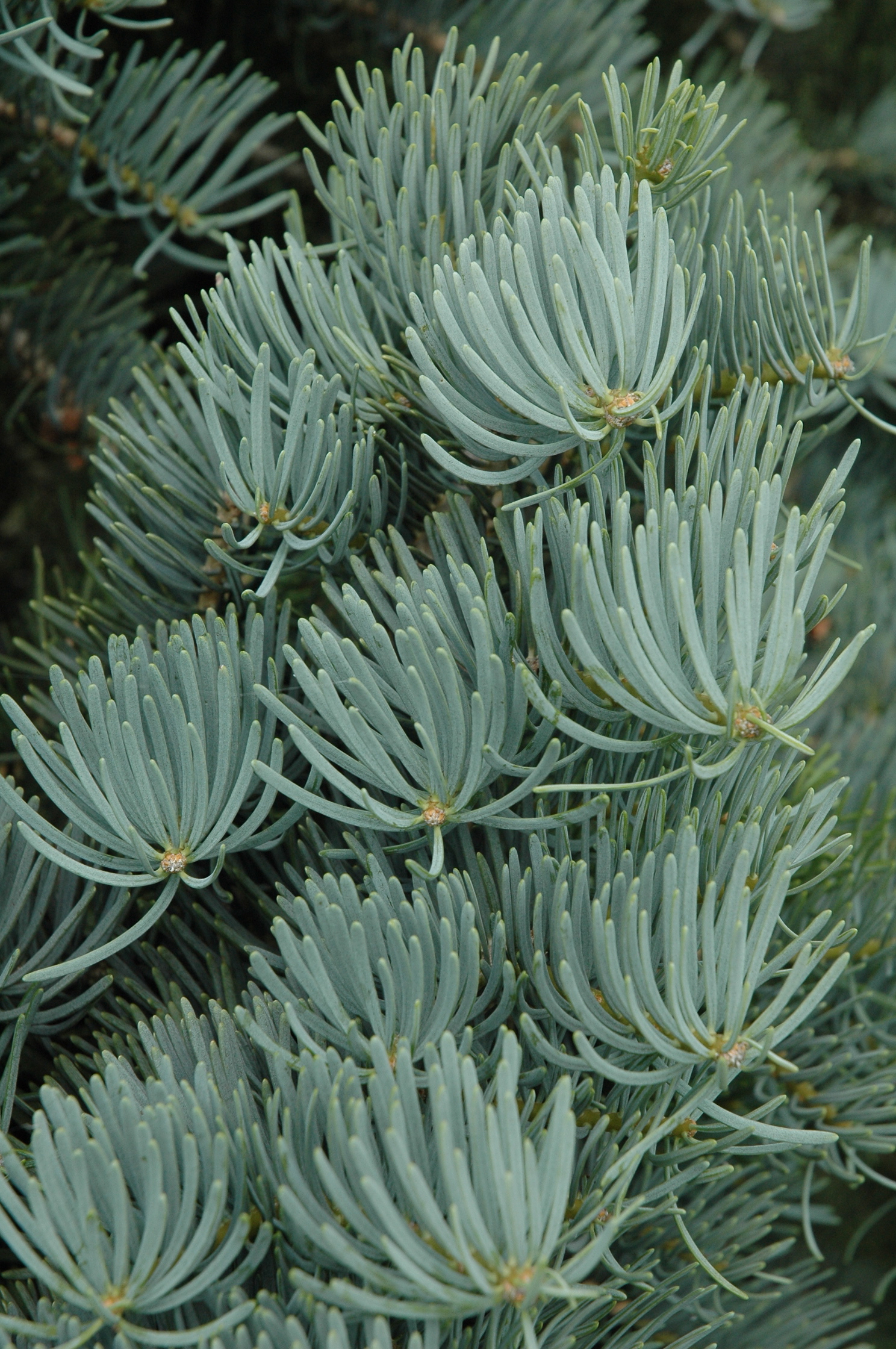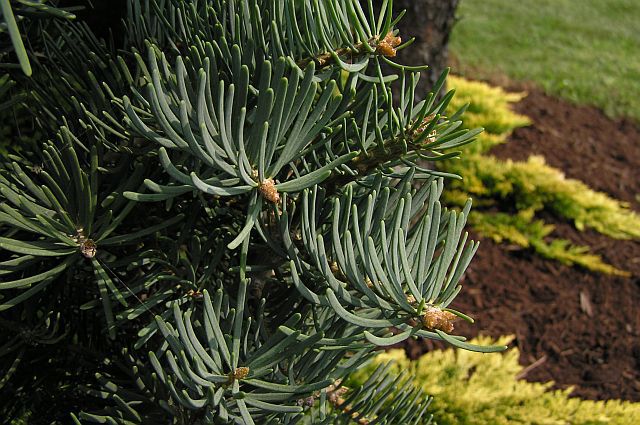Occasionally, one will see this cultivar listed as Abies concolor 'Violacea Compacta.' See below for the plant's history and justification for listing it in this way.
Abies concolor 'Compacta' is an old, slow-growing cultivar of white fir. Time has not left this beauty behind, for no newer cultivar has surpassed the color of its large, powder-blue sickle-shaped needles. Branching can be irregular, producing a potentially odd-shaped tree in the landscape. Typical rate of growth in most areas is 2 to 3.5 inches (5 - 8.8 cm) a year, resulting is a small tree, around 3 feet (1 m) tall by 2 feet (60 cm) wide after ten years in the landscape.
Ludwig Beissner of Ludwigslust, Mecklenburg-Schwerin, Germany first described and recorded 'Compacta' in 1891 in Handbuch der Nadelholzkunde. He originally listed it as A. concolor 'Violacea Compacta.' Murray Hornibrook of Matlock Derbyshire, United Kingdom, later introduced it to the nursery trade in 1923. If one were to strictly follow the rules of horticultural nomenclature 'Violacea Compacta' should be the correct name used in the nursery trade. However, the name 'Compacta' has been used for so long, it would cause a lot of confusion to change it at this point.
